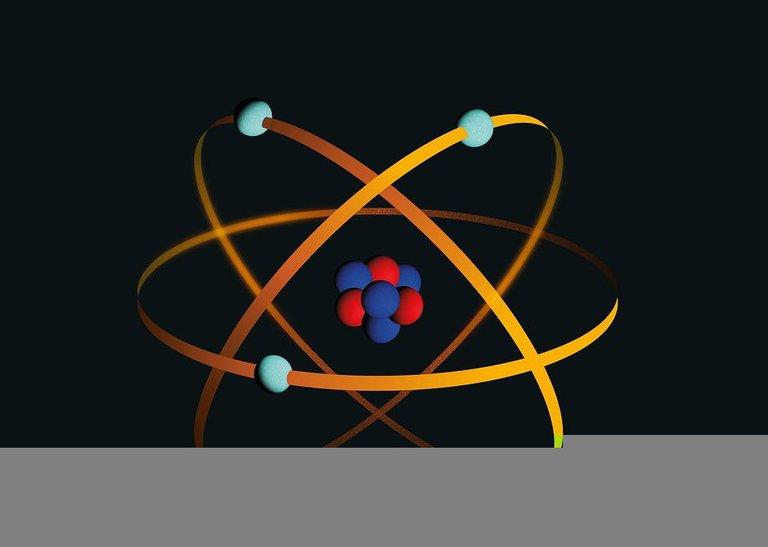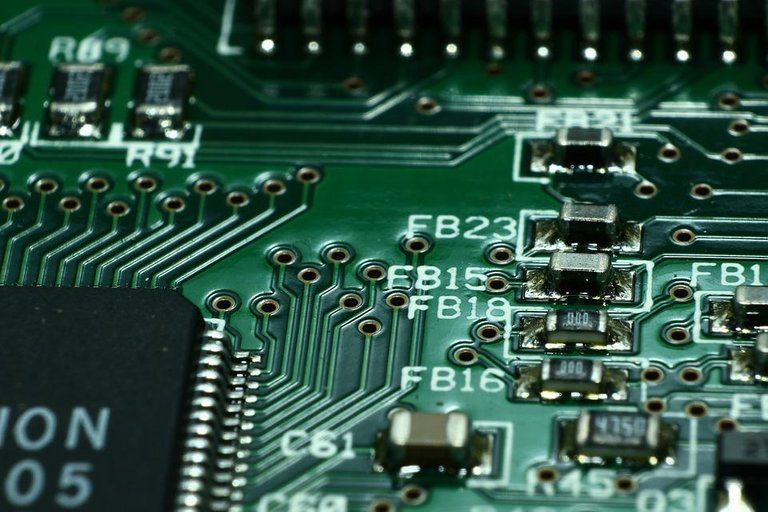Introducción a la electrónica: Resistencia eléctrica :: Introduction to electronics: Electrical resistance
Luego de haber escrito un poco sobre conductores y no conductores se hace necesario enfocarnos por un momento en los materiales conductores para indagar sobre lo que significa "resistencia eléctrica" y cómo es que hemos aprovechado esa característica física de la materia para poder crear la tecnología actual.
After having written a little about conductors and non-conductors, it is necessary to focus for a moment on conductive materials to investigate what "electrical resistance" means and how we have taken advantage of this physical characteristic of matter to create today's technology.
De antemano podemos asumir que los materiales "no conductores" poseen una resistencia electrica infinita o extremadamente alta en términos reales.
We can assume in advance that "non-conductive" materials have an infinite or extremely high electrical resistance in real terms.
Hay muchos conceptos sobre resistencia electrica y podríamos simplificar diciendo que es la cualidad que presenta la materia para oponerse al paso de la corriente a traves de sí. Pero hoy intentaré explicarlo desde mi propio punto de vista, despúes de todo acordamos que estos escritos estarían basados en mi punto de vista de cada cosa según mi experiencia académica.
There are many concepts about electrical resistance and we could simplify by saying that it is the quality of matter to oppose the passage of current through itself. But today I will try to explain it from my own point of view, after all we agreed that these writings would be based on my point of view of everything according to my academic experience.
 Pixabay
Pixabay Es necesario recordar algunas cosas fundamentales de la física, una de ellas es la estructura que conocemos del átomo para efectos básicos, es decir, electrón, protón y neutrón.
It is necessary to remember some fundamental things about physics, one of them is the structure we know of the atom for basic purposes, that is, electron, proton and neutron.
Recordemos también la Ley de Coulomb "cargas iguales se repelen y cargas distintas se atraén". Pero podemos asumir que toda materia posee atomos y todo atomo electrones, si una corriente electrica no es más que un flujo de electrones un niño podría imaginar que es posible mover electrones de cualquier átomo sin importar la materia y crear una corriente eléctrica.
Let us also remember Coulomb's Law "equal charges repel each other and different charges attract each other". But we can assume that all matter has atoms and all atoms electrons, if an electric current is nothing more than a flow of electrons a child could imagine that it is possible to move electrons from any atom regardless of the matter and create an electric current.
Aquí es cuando interviene la Ley de Coulomb, es cierto que los atomos tienen electrones pero también tienen protones que por ser cargas distintas a los electrones los atraen al núcleo del atomo, entonces los electrónes no abandonarán el átomo así sin más.
It is true that atoms have electrons, but they also have protons which, being different charges from the electrons, attract them to the nucleus of the atom, so the electrons will not leave the atom just like that.
 Pixabay
Pixabay Ahora imagine que queremos extraer un electrón de un átomo cualquiera, podríamos decir que la fuerza que mantiene al electrón ligado al átomo es la atracción del protón debido a que poseen cargas distintas, pero recordemos que la fuerza de atracción es inversamente proporcional al cuadrado de las distancias que los separan, es decir, mientras más lejos esté el electrón del núcleo (lugar donde están los protones) más débil será la fuerza de atracción hacia él y por lo tanto será mas fácil extraer ese electrón del átomo.
Now imagine that we want to extract an electron from any atom, we could say that the force that keeps the electron bound to the atom is the attraction of the proton because they have different charges, but remember that the force of attraction is inversely proportional to the square of the distances that separate them, that is, the farther the electron is from the nucleus (place where the protons are) the weaker the force of attraction to it and therefore will be easier to extract the electron from the atom.
De esta forma podríamos decir que la resistencia electrica es aquella que presenta un átomo según su naturaleza cuando se intenta remover un electrón de él. De ahí que aunque todos los materiales tienen átomos y electrónes no todos son conductores pues podríamos decir que los conductores son los que pueden mover electrones entre sus atomos (corriente electrica) aplicando una fuerza externa (voltaje).
In this way we could say that the electrical resistance is that which an atom presents according to its nature when an attempt is made to remove an electron from it. Hence, although all materials have atoms and electrons, not all of them are conductors, since we could say that conductors are those that can move electrons between their atoms (electric current) by applying an external force (voltage).
Pero aunque sean conductores siguen teniendo protones en su núcleo y por lo tanto presentaran siempre una resistencia al movimiento de sus electrones (salvo los superconductores de última generación pero ya esto es tema avanzado por ahora).
But even if they are conductors, they still have protons in their nucleus and therefore will always present a resistance to the movement of their electrons (except for the latest generation of superconductors, but this is an advanced topic for now).
De este evento en el cual se mueven electrones de un atomo a otro dentro de un material surgen dos variables físicamente medibles. Una es la potencia eléctrica que en el caso de las resistencias se disipa en forma de calor, y la otra es la resistencia, es decir que podemos saber cuan resistente será un material cuando mediante una fuerza (voltaje) intentemos mover electrones a través de el (corriente). Si conozco la fuerza que voy a aplicar (voltaje) y la resistencia que presentará el material (resistencia electrica) podre saber el valor de la corriente que voy a obtener y también el valor de la potencia que se disipará.
From this event in which electrons move from one atom to another within a material, two physically measurable variables arise. One is the electrical power, which in the case of resistors is dissipated as heat, and the other is the resistance, i.e. we can know how resistant a material will be when we try to move electrons through it (current) by means of a force (voltage). If I know the force that I am going to apply (voltage) and the resistance that the material will present (electrical resistance) I will be able to know the value of the current that I will obtain and also the value of the power that will be dissipated.
 Pixabay
PixabayLa resistencia electrica es una magnitud muy importante a tener en cuenta en los diseños de ingeniería eléctrica y electrónica, en algunos casos aparecen como algo natural de los circuitos como por ejemplo la resistencia de un alambre de cobre para transmisión eléctrica la cual es una resistencia no deseada pero difícil de eliminar.
Electrical resistance is a very important magnitude to take into account in electrical and electronic engineering designs, in some cases it appears as a natural part of the circuits as for example the resistance of a copper wire for electrical transmission which is an unwanted resistance but difficult to eliminate.
Tambíen existen resistencias con valores fijos diseñadas específicamente para ser usadas en los circuitos, estás tienen la tarea de limitar la cantidad de corriente que puede llegar a un componente según la cantidad de voltaje aplicado, se podrían considerar en este caso, elementos de protección.
There are also resistors with fixed values designed specifically for use in circuits, they have the task of limiting the amount of current that can reach a component according to the amount of voltage applied, could be considered in this case, protection elements.
Quedaremos hasta aquí por ahora y atentos a la siguiente entrega, gracias por leer. Quedo atento a tus comentarios.
We'll stay here for now and look forward to the next installment, thanks for reading. I remain attentive to your comments.
Artículos anteriores - Previous articles